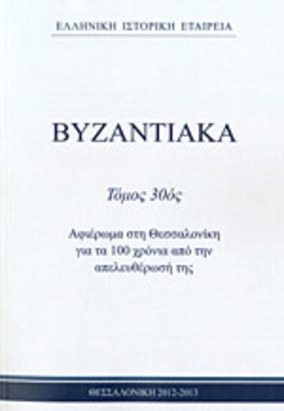Η “Ρώμη” του ινδικού Καυκάσου (Hindokush) και οι πληθυσμοί της κατά το πρώτο μισό του 8ου αι. μ.Χ. Η Ελληνική-Βυζαντινή παράδοση
Part of : Βυζαντιακά ; No.29, 2010, pages 75-89
Issue:
Pages:
75-89
Parallel Title:
“Rome” of Hindokush and its inhabitants in the first half of the 8th century. The Greek-Byzantine tradition
Section Title:
Συνεργασίες
Author:
Abstract:
The Chinese sources mention the western country Fu-lin (Rome), which is identified with Byzantium, but they also mention another Fulinin Central Asia, which must be identified with Kapisa (the region east of Kabul), where many Greeks lived in ancient times.Some years after the middle of the seventh century, the region of Kapisa was under the power of the so-called Turkoshahi dynasty. The coins of the two first kings of the dynasty bear some symbols, which indicate a return to Hepthalite traditions, i.e. a clear declaration of independence from the Turk Yabghu of Tocharestan. The return to Hepthalite tradition also shows the title of Khuräsän shah (King of Khurasan), taken by Tegin shah (son of Barhatakin, founder of the dynasty). The Turko -shah i Kings used in their coinage three scripts: Pahlavi, Brahmiand Bactrian or Hepthalite. The last script used the Greek alphabet.In the coinage, languages in use were usually the Bactrian (or Hepthilite – an eastern Iranian language), Middle Persian and Sanskrit, but at least in an issue, which was struck in Gandhara (where many Greeks lived in ancient times) in Bactrian (Greek) script and language by the King Teginshah, a part of the legend (chronology and perhaps the city where the coin was minted) is written in Greek language. This shows a return to the Greek tradition. A returning to the Greek-byzantine tradition is also shown by the use of the title Fromo Kesaro (Caesar of Rome) by Tegin shah’s son. Like the Byzantine Emperor, Fromo Kesa ro was a sworn enemy of the Arabs. Possibly, the returning to the Greek tradition was not only due to historical reasons after the appearance of the Arabs, but also to the existence of some Greek speaking people, mainly in the high valleys of Hindokush (Indian Caucasus), where in modern times the Kafirs lived.
Subject:
Subject (LC):
Notes:
Περιέχει σημειώσεις




